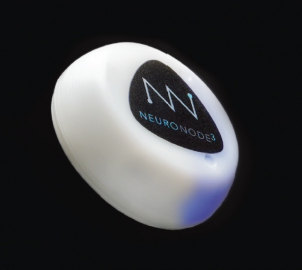Using EMG technology to improve accessibility
Research article  Open access |
Available online on: 30 March, 2020 |
Last update: 28 October, 2021
Open access |
Available online on: 30 March, 2020 |
Last update: 28 October, 2021
 Assistive technologies and Accessibility have been the focus of considerable research efforts as they improve the living comfort of many disabled persons. These efforts concern mainly the Human Activity Assistive Technology that represents the interaction between people with disability PWDs and their activities. Nowadays, diverse input/output technologies have been developed to ensure an easy and comfortable way for PWDs to interact with machines. One of the most recent technologies is the capture the electric activity generated by muscles movement. In fact, when moving a part of our body or a group of muscles an electrical activity is generated. The measurement of this activity, which is detected by electrodes fixed on the nearest skin surface to the activated muscles group, is named Electromyography EMG. Since its discovery in the 1980s, EMG have been used mainly for clinical purpose such as neuromuscular diagnosis and rehabilitation and for controlling mechanical prosthesis.
Assistive technologies and Accessibility have been the focus of considerable research efforts as they improve the living comfort of many disabled persons. These efforts concern mainly the Human Activity Assistive Technology that represents the interaction between people with disability PWDs and their activities. Nowadays, diverse input/output technologies have been developed to ensure an easy and comfortable way for PWDs to interact with machines. One of the most recent technologies is the capture the electric activity generated by muscles movement. In fact, when moving a part of our body or a group of muscles an electrical activity is generated. The measurement of this activity, which is detected by electrodes fixed on the nearest skin surface to the activated muscles group, is named Electromyography EMG. Since its discovery in the 1980s, EMG have been used mainly for clinical purpose such as neuromuscular diagnosis and rehabilitation and for controlling mechanical prosthesis.
The NeuroNode system is one of the products developed thanks to the research results in this field. It is a wireless device that can be connected to any computer, mobile phone or tablet. NeuroNode is useful to write text, send messages or emails, generate speech and more. As an input device, it is an ideal solution for children and adults with physical limitations. The user has to attach the device to his skin above a group of muscle. Then NeuroNode reads the EMG signal generated by the activation or the minimally activation of muscles and execute a task to control the connected device. The NeuroNode is compatible with most speech generative devices. Consequently, it allows communicating only using the EMG signals.
Emego is also a new device, which is based on the electromyographic signals to control electronic devices. It is activated by a very small electrical signal generated by a small muscle activity. Emego is designed to be used by persons with severe physical disability in order to control diverse electronic devices like computers, tablets, wheelchairs, etc. It aims to give them more independence in their daily live. The device is simple to set up thanks to its ability to attach the sensor to diverse body and face muscles. By a simple activation of the muscle, a small electromyographic signal is generated and captured by the attached sensor. The detected signal is converted immediately to a switching signal connected, through a wireless connection, to an existing assistive technology equipment. The sensor is a small device designed to be discreet. Consequently, it is connected wirelessly to a small station that is connected to the augmented and alternative communication AAC equipment through a standard jack connector.
Many researchers are now working on EMG signals analysis. They aim to extract more information from captured signals rather than the binary information used by the existing devices. The goal is to create more comfortable and easy-to-use devices by giving the user more than two choices at each time. The purpose of their works is to process the captured signal using IA based algorithms to classify the muscles activities and the execute a specific task or to control AAC equipment. According to many researchers the results are very accurate. In fact, the accuracy of that systems exceeds 96% for five gestures classification.
